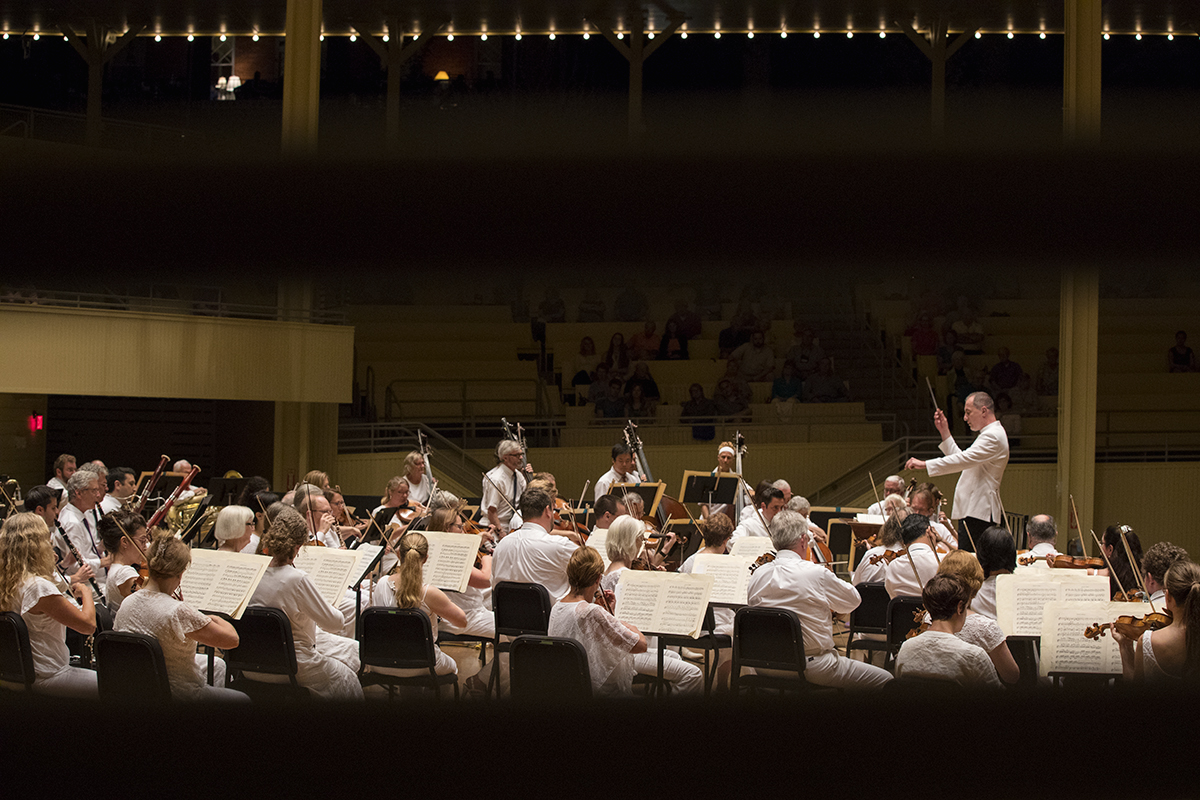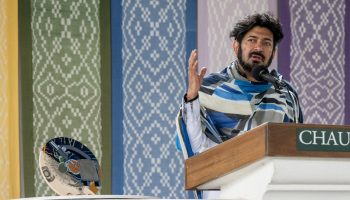It was tempting when sitting down to write this piece to review the aesthetics and acoustics of the new Amp, but that would be unfair to the music and the musicians of Thursday’s concert billed as “Music and Muse.”
To get the acoustics out of the way right up front, let me say that I largely agree with what Andrew Druckenbrod wrote in these pages on July 1. The space is bigger and more resonant, winds and brass are favored over strings.
Unfortunately, those two very general (and very preliminary) observations did the opening music no favors. Christopher Theofanidis’ “Muse” was written a decade ago for an Orpheus Chamber Orchestra series of new works based on Bach’s Brandenburg Concerti. Theofanidis chose the third, scored for strings and harpsichord. It’s music greatly indebted to Vivaldi’s concerti for strings, and Theofanidis absorbed the influence directly. The slashing figures in the opening movement strongly recall the “Winter” concerto from “The Four Seasons,” a diverting reference on a hot and humid evening.
Theofanidis keeps his textures clear and crystalline, but from my position in the front row of the terraced seating that begins just 12 rows from the stage, the string orchestra emerged as though from a great distance. The work’s many felicitous details, such as the second movement birdcalls that moved from solo string player to solo string player, were swallowed in a wash of diffuse sound. It’s a shame because Chautauqua Symphony Orchestra music director Rossen Milanov led a crisp and efficient performance — or at least I think he did.
A few extra desks of violins came onstage for Mozart’s Piano Concerto in A major, K. 488, another modestly scaled work that rewards clarity. The soloist was Orion Weiss, making his CSO debut. Weiss pedaled sparingly and valued articulation over the grand gesture, but as with the strings, his bell-like piano sound, while perfectly appropriate for the work, didn’t project well, and a fair amount of detail was lost. Blessedly, Mozart’s writing in the central adagio movement left the piano to sing alone (when Mozart premiered the work in 1786, these passages might have been improvised). Weiss played them — and the entire movement — with the attenuated sorrowfulness of a Chopin waltz.

Moving to the ninth row of the orchestra floor after intermission provided a different sonic picture for the Dvořák Symphony No. 8 in G major, Op. 88. Though closer to the orchestra than my pre-intermission seat, this vantage point was paradoxically both clearer and more resonant.
That worked to the advantage of the CSO winds, and especially the horns. Both sections were in fine form, and though balances between sections were not always ideal, the great trilling whoops delivered by the horns in the final movement were undeniably thrilling.
Milanov was in complete command of this work, molding a strong and dramatic conception in the opening movement that emphasized the contrast between the gravity of the opening G minor theme and the bright, chirping birdcall of the second subject. The development section was dark-hued and turbulent, a sudden summer thunderstorm chased away by the brilliant sun of the coda.
In the adagio second movement Milanov again brought contrasts to the fore. When the strings disappeared into the big fanfare near the close, the effect was like a pre-echo of Mahler (who, after all, also grew up in the Bohemian countryside).
The third movement was treated almost as an intermezzo. It flowed amiably enough, but without the drama of the first two movements. Perhaps Milanov was setting us up for the final movement, and if so, the gambit worked splendidly. In his hands, this was supremely theatrical music, calculated to be sure, but effectively so. The Bulgarian-born conductor was careful not to pile climax on climax, and the CSO, which was in fine form all evening, really delivered. The accelerando coda landed with potent and radiant force.
As the season progresses, some of the sonic issues of the new Amp are likely to be worked out. Changes in seating and positioning the orchestra on the stage are relatively easy fixes. If they’re not effective, the orchestra will simply adapt to the best of its ability. Time will tell, but if Thursday’s concerts proved anything, it’s that the orchestra sounds ready to take on any challenge — acoustical as well as musical.
John Chacona is a freelance writer and producer in Erie, Pennsylvania, who writes about culture for the Erie Times-News. Follow him on Twitter, @JohnChacona.






